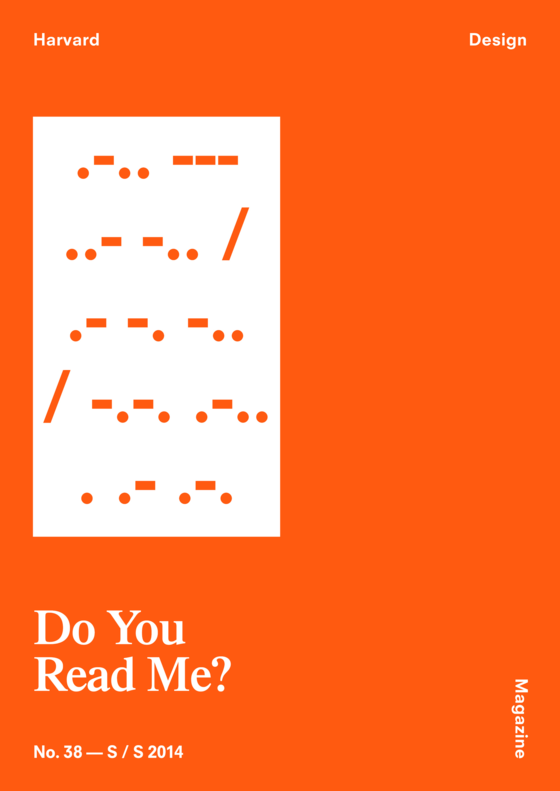A Wagnerian Music Drama
38: Do You Read Me?

“Do You Read Me?” marks a new direction for Harvard Design Magazine—one that invites “reading” across disciplinary boundaries, and stakes out an expanded arena for architecture and design dialogue.
The question anticipates a response: “Loud and clear!” But it also suggests the possibility for distortion, misinterpretation, or evaporation of the message. This issue is about reading and misreading, and the role of design in streamlining or garbling the exchange between sender and receiver, writer and reader, maker and user. Whether written or rendered, engineered or enacted, both message and messenger are designed, and it is the relation between craft and comprehension that is explored here.
But today, beyond the intentional construction and exchange of messages, we are all constantly “read” as data. While we offer our identities as moldable content and marketing fodder with every click; while our words, wants, and whereabouts are tracked by both “friends” and strangers; we might rethink the appeal of misunderstanding, or inscrutability. “Do You Read Me?” suggests that role of design is not just to construct certitudes, to clarify, but also to enable more nuanced realities to coexist.
Jennifer Sigler
Cynthia Davidson
Mohsen Mostafavi
Rafael Núñez
Vijay Iyer
Keith Mitnick
Philippe Rahm
Homi K. Bhabha
Cybermohalla Ensemble
Eileen Myles
Matthew Battles
Edward Eigen
Jianfei Zhu
Brendan McGetrick
K. Michael Hays
Sanford Kwinter
Angie Keefer
Jeffrey T. Schnapp
Peter Galison, Sonja Dümpelmann
Jonathan Zittrain, Lian Chikako Chang
Alan Kaye, Olga Touloumi
Denise Scott Brown, Jesús Vassallo
Diébédo Francis Kéré
David Pascoe
Gareth Doherty
Michael Kubo
Stephen Bates
Malkit Shoshan
Martti Kalliala
Alexandra Lange
Tan Lin
Daniel Rauchwerger, Noam Dvir
Chris Grimley, Enrique Ramirez, Michael Kubo, Mimi Zeiger
Brendan Quigley, Inés Zalduendo
Jane Hutton
K. Michael Hays, Peggy Kamuf